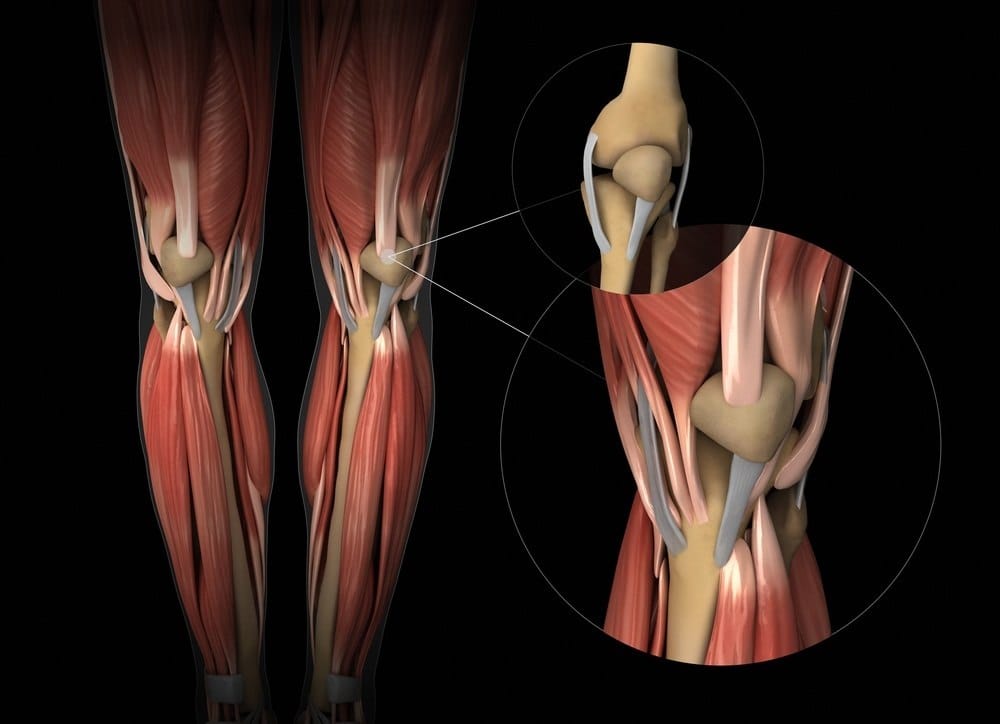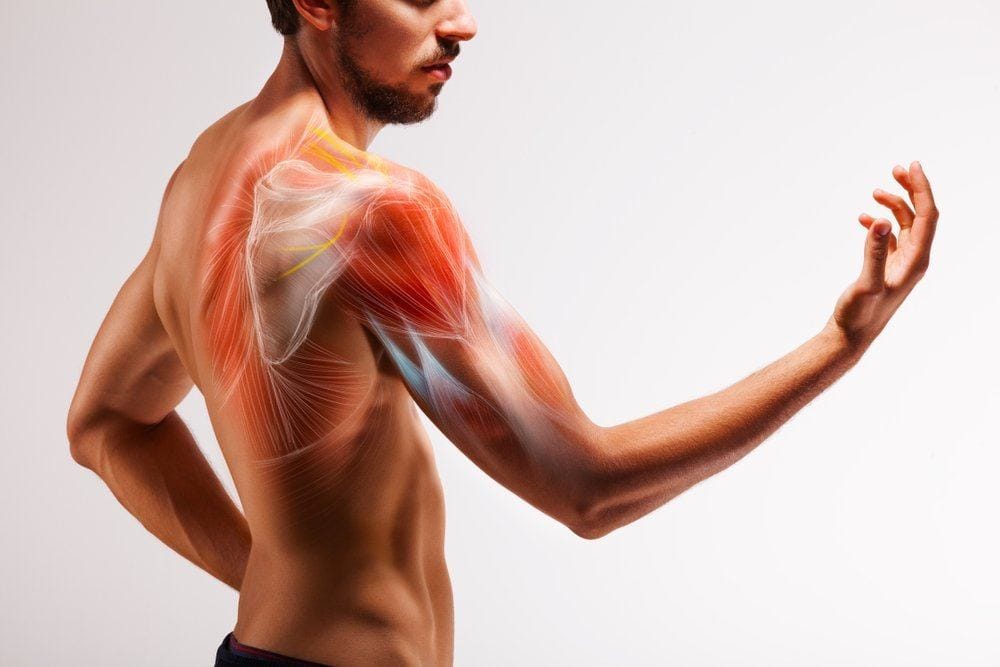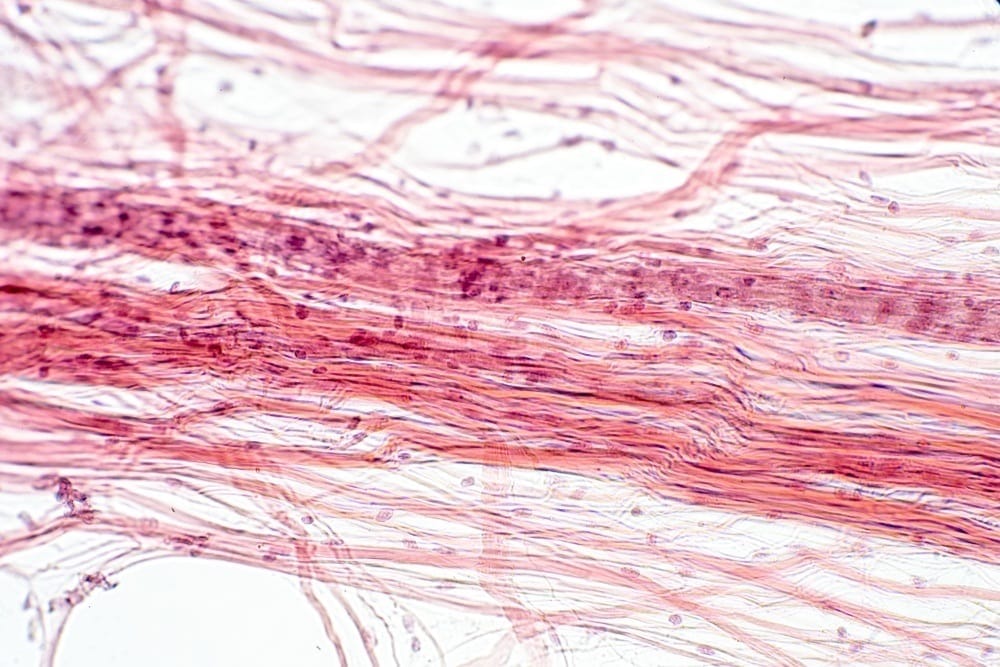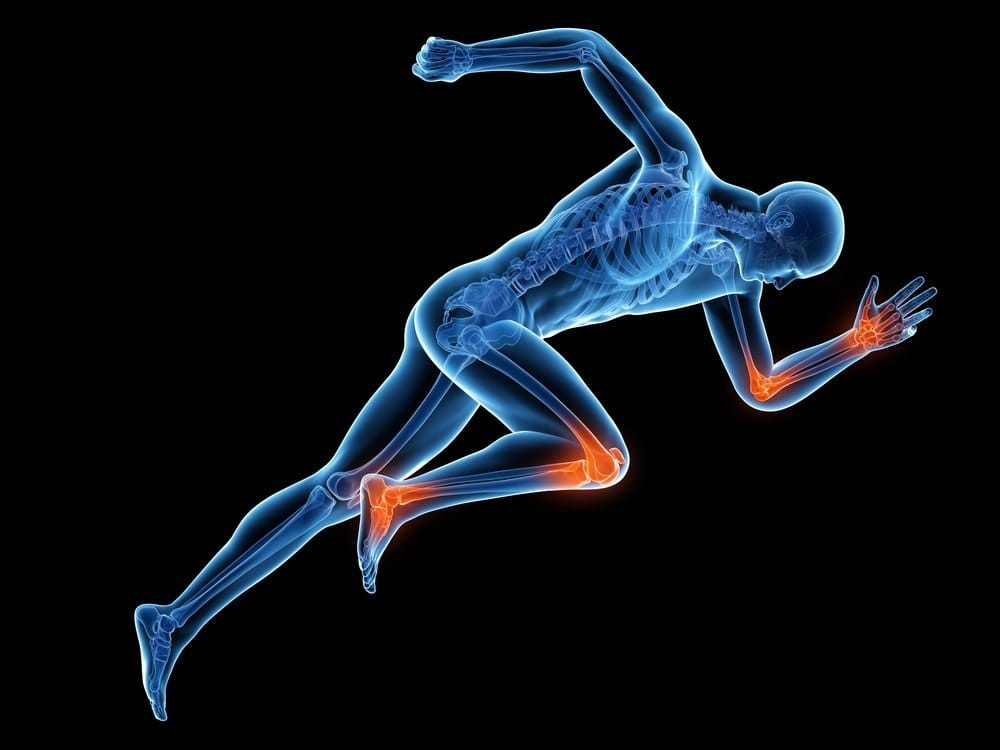Combat Arts Body Physiology
An injury to ligaments, tendons, or joints can be especially problematic and very slow to heal, disrupting training schedules, along with the rest of one’s life. Ligaments and tendons can be strengthened, toughened, and made more impervious to injury by general training, and also by using training methods designed specifically for that purpose. It is advisable to toughen and strengthen ligaments and tendons along with muscles, so a balance of strength is achieved, which also protects the body from injury.
“The risk of injury from martial arts is low compared to other contact sports. Most injuries are to the limbs and are usually mild to moderate such as bruises or cuts”

Ligaments
Ligaments hold the knee joints stable, along with other joints, and are essential for kicking, stances, blocking, and other martial arts moves. A ligament is a fibrous connective tissue made of collagen that usually attaches bone to bone, but may also attach muscles to structures such as the eyeball. Ligaments and tendons play an important part in musculoskeletal biomechanics. Ligaments connect bone to bone to form joints, as in the knee and shoulder.

Ligaments are slightly elastic, so they can be gradually and gently stretched and lengthened over time, increasing flexibility. Care must be taken, however, as ligaments can become overstretched if pushed too far, too fast, which will then compromise and weaken joints and potentially cause problems.
Martial Arts Can Strengthen Ligaments
Over time, correctly practicing martial arts will strengthen ligaments, tendons, and muscles, helping to avoid joint damage. Overstretching a ligament will result in a sprained ligament, meaning it has been overstretched, and may even have a partial tear.
Ligaments and tendons do not have their own blood supply traveling through them, which helps make them very strong and able to withstand intense applied force. However, it also makes them heal much more slowly when injured, since without a direct blood supply important nutrients and fluids cannot easily be brought to the site of an injury.

This makes regeneration of ligaments and tendons a very slow process compared to other connective tissues. This is why it is not good to push the body too quickly to achieve a high level of flexibility. Another person may be able to quickly become very flexible without harm. They may be double-jointed. A double-jointed person is someone with highly elastic ligaments that allow them to move their joints and body into more extreme positions than most can easily achieve.
For most people, however, the ideal approach is to slowly and gently stretch ligaments, increasing flexibility while simultaneously strengthening and toughening them so they can handle more force and power without risk of injury. Ligaments can be thickened and strengthened over time by regular training.
Tendons
Tendons are made of collagen as are ligaments. They are tough bands of fibrous connective tissue that usually connect muscle to bone, and are strong enough to withstand high tensile forces while transmitting that force from muscle to bone.
When a muscle contracts, it is the tendon that moves the bone and makes the action happen. Tendons are very similar to ligaments, except that tendons typically connect muscles to bone, and ligaments typically connect bone to bone.
When the fingers are wiggled, tendons can be observed in the back of the hand. Tendons and muscles work together in pairs and can only exert a pulling force. For example, muscles and tendons always work in pairs, so one set pulls the arm up, and the other set pulls the arm down.
Areolar Connective Tissue
Areolar tissue is a type of loose connective tissue. There are six different forms of loose connective tissue in the body. Areolar connective tissue is named after the airy appearance of the tissue. It is made up of collagen, elastic, and reticular fibers arranged in no particular pattern, together with different types of cells, all embedded in a semi-fluid ground substance. Areolar connective tissue has no particular pattern to it such as layers or cell rows.

This is actually one of its primary distinguishing characteristics. Areolar connective tissue binds skin to the muscles beneath it, helps hold organs in place, is found around nerves and blood vessels, and in and around mucus membranes. It provides support, elasticity, protection, and strength within the body.
Stretch Receptors
Stretch receptors are important sensory structures within each muscle that monitor the condition of the muscle and communicate that information to the central nervous system.
They are part of a feedback loop between muscles and the central nervous system that give movement information to the central nervous system about what that muscle is doing, and how fast, so it can adjust accordingly. Stretch receptors are sensitive to the change of length and speed of movement in a muscle. They are important for maintaining dynamic movement and posture.
Muscle Tissue
The human body has more than 600 muscles, and muscles make up approximately half of a person’s body weight. Muscles basically function within the body to help us move. There are three types of muscle tissue in the body.
The muscles most people think of are the ones seen just under the skin which are called skeletal muscles because most of them attach to and move the skeleton. The second type of muscle tissue is cardiac muscle, which is found in the heart, and helps pump the blood through the circulatory system. The third type is called smooth muscle, and works with various involuntary movements such as making your hair stand on end when cold or afraid.
Joints
All movement comes from the joints.
Joints that allow for the most movement between bones are the least stable, such as knees and shoulders. Some joints have relatively little movement but help stabilize and strengthen the body, like the spine, while others are designed for movement and flexibility, like the knee. There are a few joints that provide almost no movement but are instead designed for protection, strength, and stability, like the skull bones that protect the brain from harm.
Certain martial arts are harder on joints.
Capoeira can be brutal on knee, elbow, and shoulder joints, while aikido has a high incidence of joint injuries, and taekwondo can harm knees if practiced incorrectly. Also, hyperextension of the joint, or letting the joint open too wide, is always a recipe for injury, particularly when followed by a strike in that position.
Joint Types and Functions
There are three types of joints in the human body: fibrous, cartilaginous, and synovial.

Fibrous joints mean the bones are joined together directly by thick fibrous tissue, as in the skull or pelvis, and do not move. Cartilaginous joints mean the bones are joined by cartilage, for instance the sternum and first rib, and allow very little movement. The synovial is the third type of joint, and typically is of the most interest for the martial arts and other practitioners. The synovial joint is the joint responsible for all possible movement types utilized by the human body.
There are six types of synovial joints, and they are the most common type of joint, characterized by bones not directly touching, but functioning together inside a fluid-filled sac that is held in place by ligaments and tendons. The knee is an example of a synovial joint.
The synovial joints are the most unstable and easily dislocated or otherwise harmed joints in the body, often targeted in martial arts when learning defensive and offensive moves. These joints do not require much strength to harm, which is why they are extremely vulnerable during practice sessions.
Protect Your Joints
Stances can help or hurt the knees. Stances that are practiced correctly with the knee pointing the same direction as the foot, and with knee kept above but not farther out or past the foot, will strengthen ligaments, tendons, and muscles. Basic rule for any stance is that the knee needs to point where the toe is pointing.
The Skeletal System must be Lined Up Properly
Stay conscious of the proper width of the stance required for the movement being executed.
If a stance is practiced wider or narrower than needed for that movement it can create a misalignment which will cause harm to the patellar tendon over the knee, and will eventually create irritation, inflammation, and knee pain.
Be aware of personal limberness and flexibility, since each body has different levels of movement or ROM.
Do not force the body lower than natural limberness allows as this would destroy the knees. Remember not to allow your foot to go out past the knee, or farther out than the knee.
If it does then you need to place your foot farther out and can probably safely go into a lower stance. Ensure your knee is over your foot—not past it--or farther away from the body than your foot.
Correct Foot Position
Some of these differences can be supported by keeping the weight balanced more on the outside edge of the foot which helps with over-pronation and flat feet.
People with flat feet or a tendency towards overpronation need to learn to lightly grab the floor with their toes. This will automatically raise the inner edge of the foot off the floor, helping to shift weight towards outer edge of foot.
These are important issues since they will weaken and stress the knees and feet eventually, if not corrected. Most martial arts, if practiced correctly, including tai chi for a slower approach, will help strengthen the ligaments, tendons and muscles around the foot, ankle, and knee.
Knee issues arise for a variety of reasons:
There are almost as many ways to hurt the knee as there are ways to move, so always look to skeletal alignment first, then to how the body is being moved through space (weight on outer edge of foot, etc.), landing, amount of force involved, etc..
When skeletal and alignment issues are resolved, people often find it heals many related problems that they may have been dealing with for years. Stories abound of persistent knee pain, foot pain, and back or neck pain disappearing after resolving alignment issues and strengthening surrounding musculature.
Basic anatomical differences.
Compare Jet Li at 5’6” with Dolph Lundgren at 6’5”. Both are martial arts masters, but very different anatomically. In martial arts terms these differences can make certain styles such as wing chun work better for a shorter or smaller man or woman, while others give advantages to a longer reach such as Northern Shaolin kung fu and taekwondo.
There are significant differences in body structure from person to person. A move or stance that works for 70 percent of the population will be destructive for others due to simple anatomical differences such as length of shin bones, straightness of knees, flat feet or particularly high arch.
For some people, aligning the knee and ankle joint will be difficult due to anatomical differences. An excellent trainer, shifu, or teacher will spot these minor differences and work around them, teaching these students how to properly align their bodies.
Importance of Muscle Strength
All muscles in the body must have proper strength training so they can hold the different muscles and body parts in correct position for any given movement. This is especially true for the shoulders, which have very little direct bone support, and are completely dependent upon strong surrounding ligaments, tendons, and muscles to ensure powerful range of motion is safely executed.
If the muscles surrounding and supporting the shoulder joints are not kept extremely and equally strong, the results may be painful, and disruptive of training, as in a rotator cuff injury.
Knee Strength
This is especially true of the knee, too, for basically the same reasons. Opposing support ligaments, tendons, and muscles must be strengthened equally to ensure safety. The knee has ligaments, tendons, and muscles that hold the bones in proper position, ensuring correct forward and backward motion, while preventing destructive side to side movement.
If these structural and supporting ligaments, tendons, and muscles are too weak—injury occurs. In martial arts the knee is especially vulnerable to harm, and it is imperative that structurally supporting musculature be kept extremely strong for protection and stability, and for providing power while moving.
Gluteal Strength
The ligaments, tendons, and muscles surrounding the knee are also supported by powerful gluteal muscles that turn the leg out properly.
Gluteal muscle and rotator strength directly affects knees, and if they are too weak, can be responsible for developing knee issues and pain.
The gluteal muscles, and the group of muscles known as deep external rotators, are essential for maintaining correct body alignment and protecting the knees during movement.
These muscles must be strong enough to support the exercise so they will correctly rotate the thigh, for instance, during round house and snap kicks.
This large group of muscles also contributes to stability during jumping and landing, and helps patella tracking issues.
Modern Athletes
In 2016 Sports Illustrated included 11 martial artists among its “Fittest 50” list ranking the fittest 50 male and fittest 50 female athletes in the world. This shows how much difference martial arts makes in modern human physiology. Studies comparing humans from 30,000 years ago to modern day humans show a 10 percent decrease in height, size, strength, and brain volume.
Humans have been decreasing in strength, intelligence, and endurance for millennia. The typical sedentary lifestyle of today also promotes extensive ‘couch sitting.’ Scientifically speaking, that’s the worst thing for the body. The human body was created to move. Martial artists have a distinct advantage when it comes to creating a powerful physique, improving mental focus, and increasing strength.
